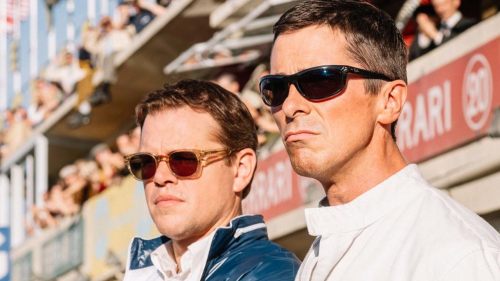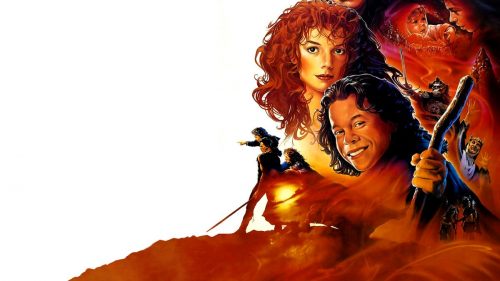Racing And Rivalry: A Look Back At Ron Howard’s Underrated RUSH
Ford vs Ferrari is almost here. Get your tickets now!
In 2013, director Ron Howard’s Rush came and went from theaters as quickly as the Formula 1 cars at its center. The film, depicting the rivalry-turned-friendship of real life racers James Hunt and Niki Lauda, was a revelation at the time — albeit one that went largely ignored by both audiences and end-of-year awards — and six years after its abbreviated theatrical run, it feels like even more of a hidden gem waiting to be discovered.
With this week’s release of Ford v. Ferrari, a gripping racing picture set during the go-go ‘60s, it seems a perfect opportunity to revisit Howard’s racing excursion, jumping ahead one decade later but no less spellbinding, to appreciate it for all that it did so right. Howard has, of course, built a sturdy, decades-long career as a journeyman director whose very charm comes from his ability to depict scenarios both realistic and fantastical with steady hand and practiced eye.
From Splash to The Da Vinci Code to Solo: A Star Wars Story, Howard has always been able to glide comfortably from one genre to the next, with the lack of a specific authorial imprint on his productions his most defining trait as a director. And yet, even still, it’s also clear from a glance at Howard’s filmography over the decades that docudramas hold a special place in his heart.
Having masterfully lent verisimilitude and immediacy to events as diverse as those depicted in Apollo 13, A Beautiful Mind and Cinderella Man, it’s within this wheelhouse that Rush very comfortably falls. Yes, the raceway scenes, with various Formula 1 cars streaking past the screen with blinding authenticity, are dynamic and nerve-wracking. Helped along by Hans Zimmer’s memorable score, it all adds up to some of the best work of Howard’s entire career.
But even still, none of those would mean much if we didn’t feel an abiding investment in the character dynamics. All credit on that front to the script by Peter Morgan, who previously collaborated with Howard on Frost/Nixon (another affecting mental tug-of-war between two very driven combatants, albeit in a vastly different arena), who lends a you-are-there authenticity to the entirety of the proceedings. In addition to the strong script, the movie is a masterpiece of casting, providing one of the most effective showcases for star Chris Hemsworth’s considerable abilities he’s ever gotten.
While he’s spent the better part of the last decade embodying one of the most powerful superheroes in the Marvel Cinematic Universe, it’s with films like Rush that Hemsworth's natural skills as an actor really come to the fore. Playing the cocksure Hunt, a playboy racer known just as much for as antics with the ladies as his skills on the track, Hemsworth is able to readily tap into his wellspring of Thor-level charisma, but he also imbues Hunt with a hint of sadness and vulnerability hiding just underneath all the bravado.
(And by the way, if you happen to Google images of the real Hunt, it sure feels like Hemsworth was placed on this Earth specifically to play the late racer.)
But of course, any conversation about the casting in Rush must also include appreciation for Hunt’s opposite number, who arrives in the form of Daniel Brühl as Lauda. Where Hunt is fancy-free, Lauda (who himself just passed away within the past few months) is uptight and fastidious. Brühl (also a Marvel denizen, having played main baddie Zemo in Captain America: Civil War), also resembles his real life counterpart, and speaks in a clipped Austrian accent that neatly evokes the real Lauda’s.
The German-born actor imbues Lauda — called “the Rat” both for his buck teeth and difficult personality — with a vibrant inner life that makes some of the travails the character experiences absolutely heart wrenching. It’s ultimately the push-and-pull between these two competitors, driven to surpass each other on and off the track, that makes Rush truly hum like the precision piece of cinematic engineering that it is. And yet, rather than set up a simple protagonist/antagonist dynamic, the genius of the film’s construction lies in the way it devotes equal screen time to each of the racers.
We spend time getting to know both. Their hopes, their fears, their relationships. This in turn works to prevent us from landing on one side or the other in their ongoing rivalry. In fact, it’s not long before we realize this isn’t so much a competition as it is a love story. These are two men who perform at the highest possible level in a sport that is itself earmarked only for the elite of the elite. They’re not destined to be enemies, but rather best friends, and their journey towards that preordained end makes this a richly rewarding experience.
As mentioned earlier, the film failed to make much of a mark during its initial release during the fall of 2013, and it’s hard to figure why. Certainly it had the critical acclaim, not to mention a marquee, global superstar to hold down the center. But for whatever reason, audiences took a pass. One advantage of a movie like this underperforming is that future enjoyment isn’t curtailed because it failed to launch a trilogy or franchise, never finishing its story. Rush is complete unto itself: A gripping beginning, a compelling middle, an electrifying ending. And it’s a movie that deserves to find the audience now that raced away the first time.



